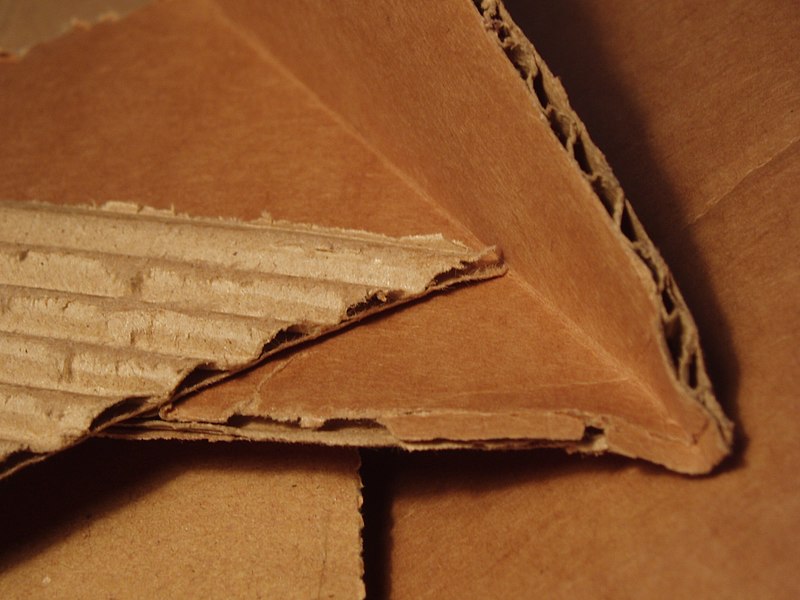Today's post was brought to you by our sponsor at Déménagement à Montréal par Martel Express/montreal demenagement.
 |
| photo courtesy of: Wikimedia Commons |
My concerns, while somewhat accurate did not take into account that a high percentage of corrugated cardboard is not only comprised of recycled material, but can again be recycled into new cardboard. While many areas do not offer curbside collection, several communities do have collection sites for corrugated cardboard recycling.
To understand how corrugated cardboard is recycled, we first need to understand how it is made. It is a type of "cardboard sandwich", with two layer of outer board and an inner layer of board that has been run through a fluted press. The layers are glued with a starch based (read: not polymer) adhesive.These fibers are often the cleanest source of pulp for recycling. A few exceptions are food/pizza boxes as the grease makes the cardboard difficult to re-pulp, as well as boxes covered in tape. (a little tape and or labels is okay and can be sorted, too much will jam the machines and should be removed before recycling). The staples and other metal fastenings are removed during the recycling process with industrial magnets.
Corrugated cardboard also makes an excellent layer of compost or to line garden beds for weed control. According to recycling advocates, every ton of recycled cardboard saves between three and nine cubic feet of landfill space as well as 25% of the energy required to make new cardboard. Paper pulp can be recycled up to 9 times before the fibers are too short to recycle, at which time, composting is an excellent solution. However, that sort of cardboard can be shredded and get a second life as packaging material.
No comments :
Post a Comment